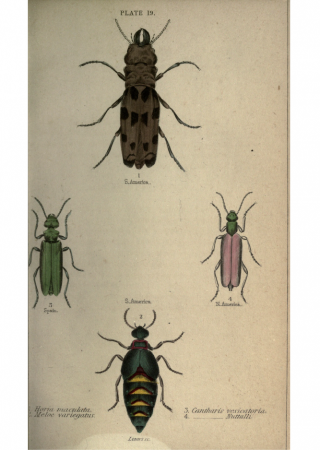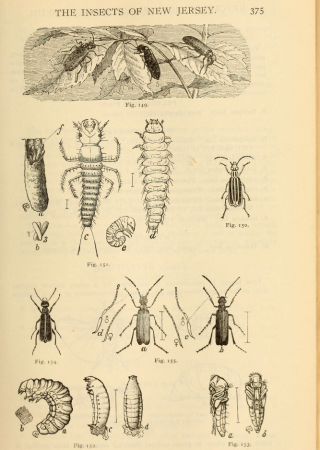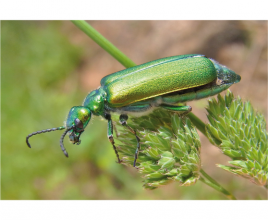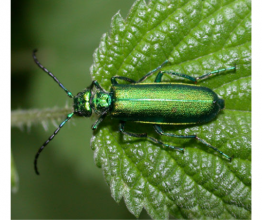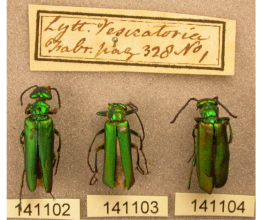Spanish fly
Lytta vesicatoria
Did you know that… ?
- ..."Spanish fly" is a beetle of Meloidae family, which carry a large amount of Cantharidin poison in their bodies?
- ...Cantharidin has a significant aphrodisiac effect, which is why it was used during the middle ages as an ingredient in various "love potions", and by women, to abort a pregnancy?
- ...since antiquity, powder from these beetles has been used by various poisoners?
- ...when there are many of these beetles in an area, they produce a marked musky odor?
- ...these beetles have a very complicated development, going through several larval stages, some of which are parasitic on beehives?
- ...birds and some mammal insectivores are immune to Cantharidin?
- ...only the males contain the poison, but they transfer it to the female and she passes it on to her eggs?
Practical info
Basic information:
Phylum - Arthropoda
Class - Insecta
Maximum length - 2 cm
Eats - leaves of ash, privet and others
Habitat - Europe and Asia
Type of poison - terpenoid
Distinguishing marks:
Metallic green beetle with golden luster. Body is long, divided into head, thorax and abdomen. The thorax has three pairs of legs and two pairs of wings, the first of which is metamorphosed into hard wing covers (elytra). Antennae are on the head.
Characteristics and poison
This beetle is found primarily in warm climates. The poisonous liquid produced by the "Spanish fly" causes festering blisters on skin contact, and contact with the eyes can even cause blindness. A deadly dose is only 30 milligrams. One gram is enough to cause symptoms in 5,000 people. Symptoms are a painful erection in men, bloody diarrhea and intestinal problems. There have even been cases of damage to the heart, kidneys or nervous system.

